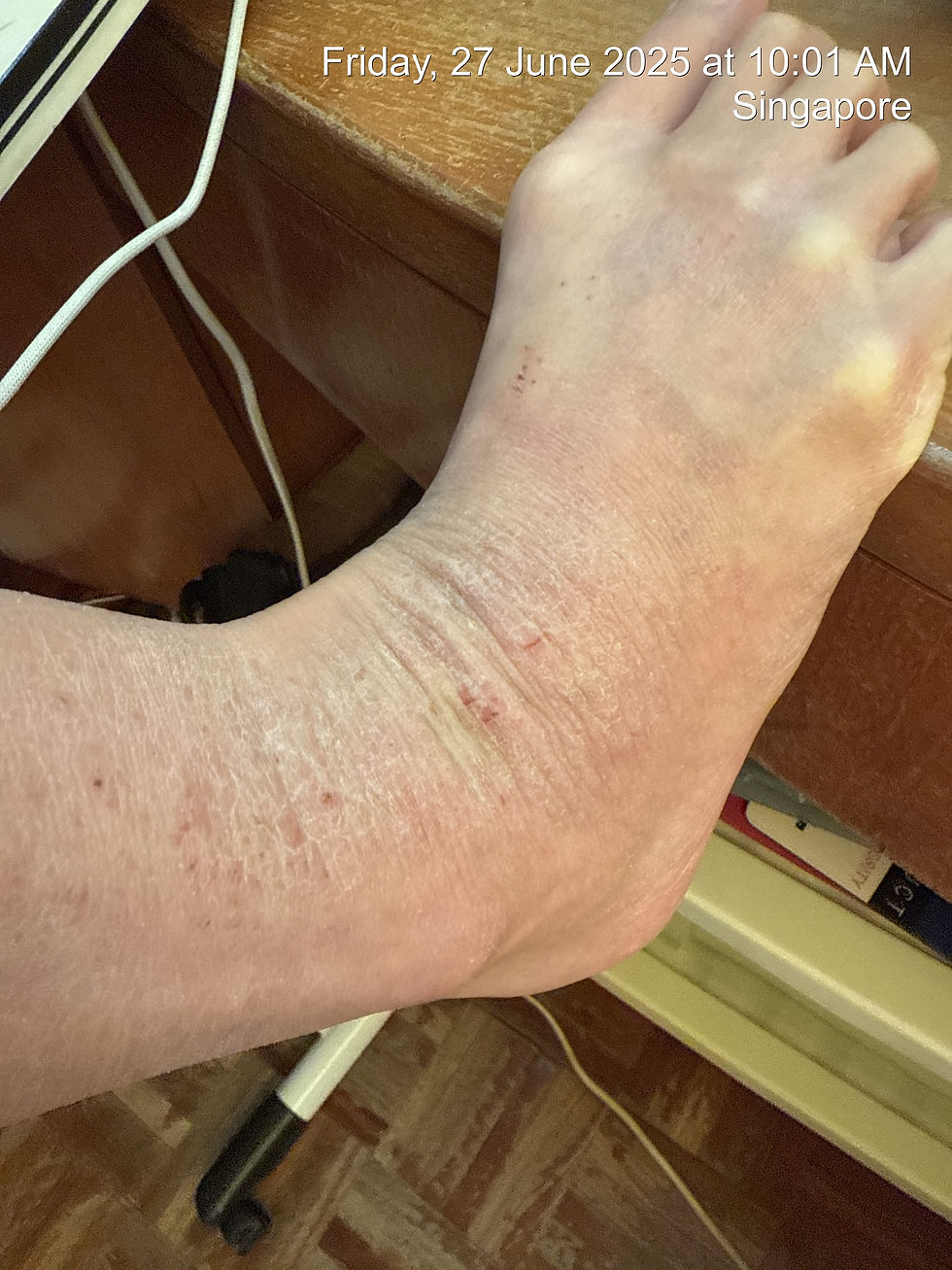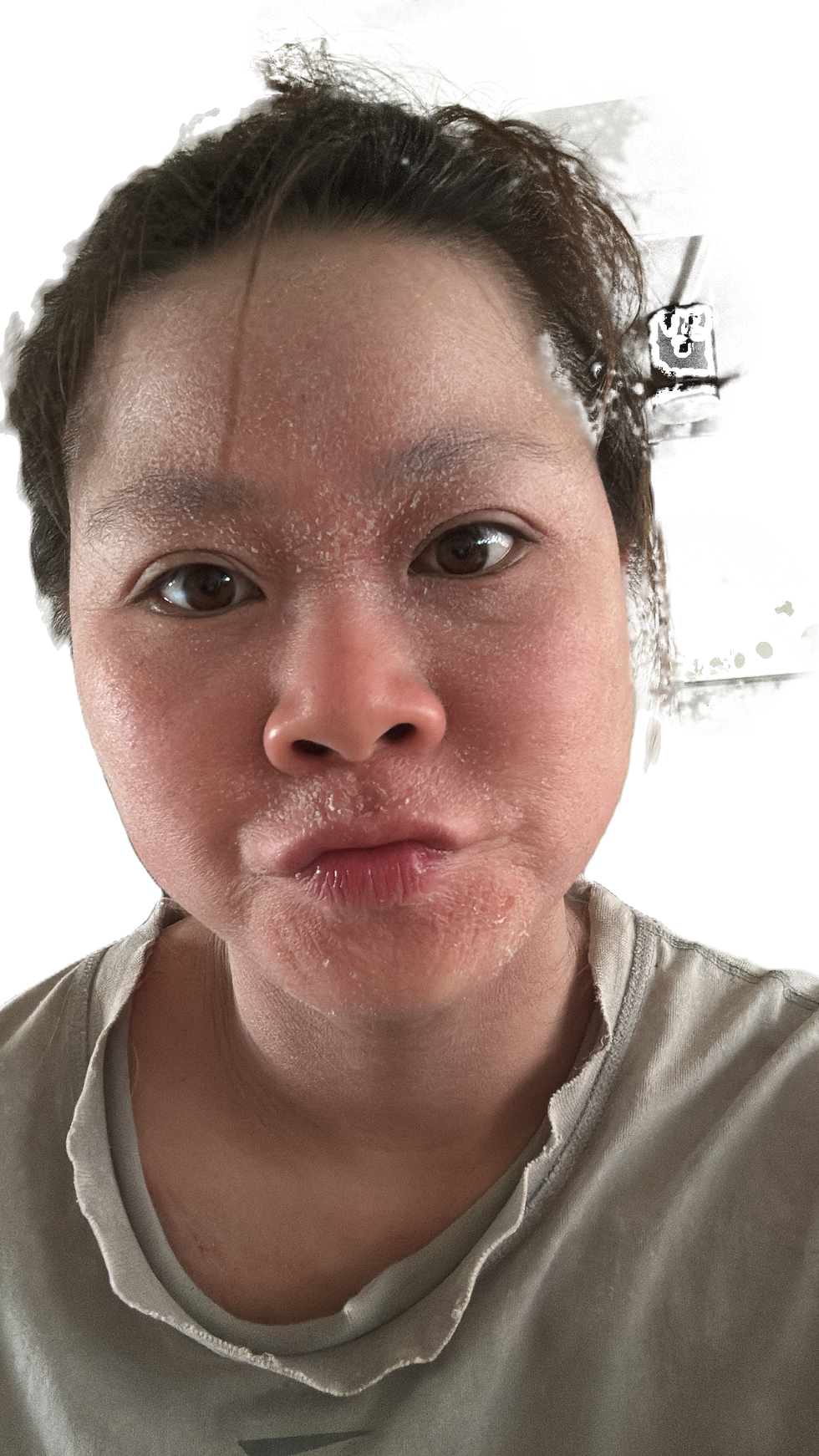Understanding the Stages of Skin Healing during Topical Steroid Withdrawal
- Wen Ying Pang
- Sep 14
- 3 min read
Topical Steroid Withdrawal (TSW) can feel like an uphill battle for many dealing with skin conditions such as eczema. Having gone through this myself, I know how crucial and reassuring it is to understand the stages of skin healing during this process. Each stage has its own unique signs and should be expected to last a different amount of time 🌿
The Initial Stage: Acute Withdrawal
The initial stage of skin healing during TSW typically lasts about 0 to 6 months. During this time, the skin often looks red, swollen, oozing and feels warm. Many individuals report experiencing intense itching and discomfort, making this period particularly challenging.
This inflammation arises as the body reacts to the withdrawal of topical steroids, marking the beginning of the road to recovery. For example, a study revealed that around 90% of individuals undergoing TSW experience this inflammation phase. While distressing, this inflammation indicates that your immune system is responding and starting the healing process.


The Second Stage: Dryness and Shedding
After the initial phase, the second stage usually takes place between 6 to 18months, coupled with occasional flares and constant shedding. Oozing lessens, but skin becomes extremely dry, flaky, cracked, and itchy.
Keeping the affected areas clean and dry is critical during this stage to prevent infection. While the sight of weeping and flaking can be disheartening, it’s a positive sign that your skin is shedding damaged layers and healing. Many who have gone through this uncomfortable stage acknowledge it as a vital step in their recovery.


The Third Stage: Thickened and Hypersensitive Skin
As healing progresses, the third stage generally occurs between 1 to 3 years. At this point, your skin may appear leathery or “elephant-like”, still itchy by less burning. It can be very reactive to sweat, fabrics, temperature, and stress.
To manage this dryness, some people opt for regular moisturizer. It is believed that products containing ceramides or glycerin can help in restoring the skin’s barrier. While others opt for moisturizer withdrawal (MW) or no moisture therapy (NMT). MW means that no oils and creams will be applied to the skin at all times, while NMT limits the water intake and showering, on top with no moisturizer as well. Flaky skin can be frustrating, yet it signals that your skin is regenerating fully.



The Final Stage: Remodeling
The remodeling stage is the final phase of skin healing during TSW, lasting anywhere from 2 to 5 years, depending on history and healing support. Here, your skin begins to regain its normal texture and appearance, with redness and irritation gradually fading away.
During this stage, it remains vital to care for your skin with gentle products and steer clear of irritants that could trigger a flare up. This stage is filled with promise, as it reflects significant healing progress.
Wrapping Things Up
Recognizing the stages of skin healing during Topical Steroid Withdrawal provides essential insight for anyone on this journey. From the inflammatory phase to the remodeling stage, each step plays a pivotal role in recovery. While timelines can differ, knowing these stages helps to manage your expectations and fosters a sense of patience 🧘♀️🧘🏻♂️
Having experienced TSW myself, I want to inspire others to stay hopeful and committed to their healing journeys. Healing takes time, but each step forward is a significant achievement. By understanding these stages, we can effectively navigate the challenges and celebrate the progress made 💪🏻




Comments